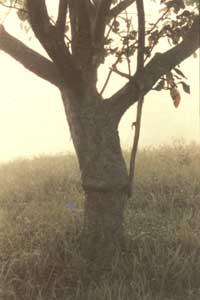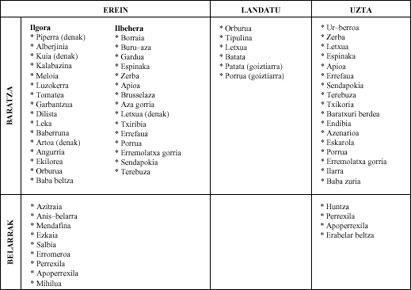Reader corner
1989/06/01 Errekondo Salsamendi, Jakoba Iturria: Elhuyar aldizkaria
QUESTION
Grafts in fruit trees are well known, which are very common in our hamlets. These grafts are usually made between plants of the same species (although of different types, we have all seen on occasion trees that give specimens of different types).
My questions are:
- What does this snow feature consist of?
- Hawthorn does not usually reach large thicknesses in its trunk or high heights. I know some of those who have had a vaccine, where the thickness and height correspond exactly to the tree model. Why?
- Snow grows well on both unmilked and elevated slopes. Therefore, wouldn't it be suitable for joining plantations and junk?
Enrike E. Guisasol
ANSWER
Grafting or grafting of fruit trees WHITE HAWTHORN as graft foot Why?
The graft consists of joining parts of two different plants and getting a plant capable of living. It is a plant formed by two mothers or parts of two different origins because of the graft. The foot of the graft, which is below the graft point, has become a root system in the new plant. The graft, on the other hand, will be the one that is above the point of mented, which will produce leaves, flowers, fruits and seeds.

What causes the graft? The most important are:
- When a variety of fruits cannot adapt to a soil (pH, humidity, dry land, excess Ca, salt, etc. ). If you want to produce this variety, it will suffice to implant it in another variety adapted to live in that land.
- By attaching the foot of the graft and the graft, the tissues of both create a scar. This scar will always be an obstacle to sweat circulation. Depending on the foot of the graft and the affinity of the graft (family, gender, physiology, ..) the obstacle of the scar will be greater or less. As this obstacle increases, the plant that becomes a graft will be weaker and smaller, but its fruits will be more abundant, higher and of better quality. In fruticulture it is known that the force that is lost in the form of "green" or structure (branches, leaves...) is gained in flowers and fruits.
- Achieve uniformity. Being plants of seed origin and sexual reproduction, the heterogeneity is high (hence the varieties), but if a variety of grafts are injected the grafts of a tree, uniform plants, uniform fruits, at the same time, etc. are obtained.
Therefore, the advantages of using MENTAKETA are important.
The refrigerator as a pie de mentu
- Elorri beltza (Prunus spinosa) is used to introduce fruit trees of the genus Prunus: plums, apricots, etc.
- The white thorns are of genus crataegus and as the previous ones belong to the family of the rosaceae. White hawthorn apple in the Basque Country (Malus sp.) just wrong. Many times pear (Pyrus sp.) and the common spirit (Mespilus germanica). As we see, all belong to the family of the Rosaceae, but the different genera and as we have explained before, the affinity will be in the graft (but not too large) obtaining a fruitful production.
As for the height of the grafted spikes, normally in cases where the graft goes ahead (and we want to get fruits), we will take care of this tree: take it to the ground, prune, fertilize, perform treatments to fight diseases and pests, etc. More robust growth tree, higher height, etc. It will be. On the contrary, the hawthorn raised in the bush ponds or on the wild shore will not benefit from these aids and their evolution will normally be less.
However, there are exceptions, and in the Erdoizta neighborhood of Errezil, in Gipuzkoa, in a box of birches converted into enclosure there is a hawthorn with a perimeter of 175 centimeters. Let it grow quietly (without shadows and well drained in the enclosure) and it has grown over many years, so that, as you mention, it can be considered within tree models.
With respect to the exploitation of mendisail and txak, without splinting as hawthorn, an adequate production would not be obtained, if you do not sell your units to some special confectioner. In the current production of fruit products the slope sites are not considered suitable; the treatments necessary to obtain the appropriate yields, collection machinery, etc. Its use is impossible. The high slope areas seem more suitable for forestry.
Related information

Gai honi buruzko eduki gehiago
Elhuyarrek garatutako teknologia




